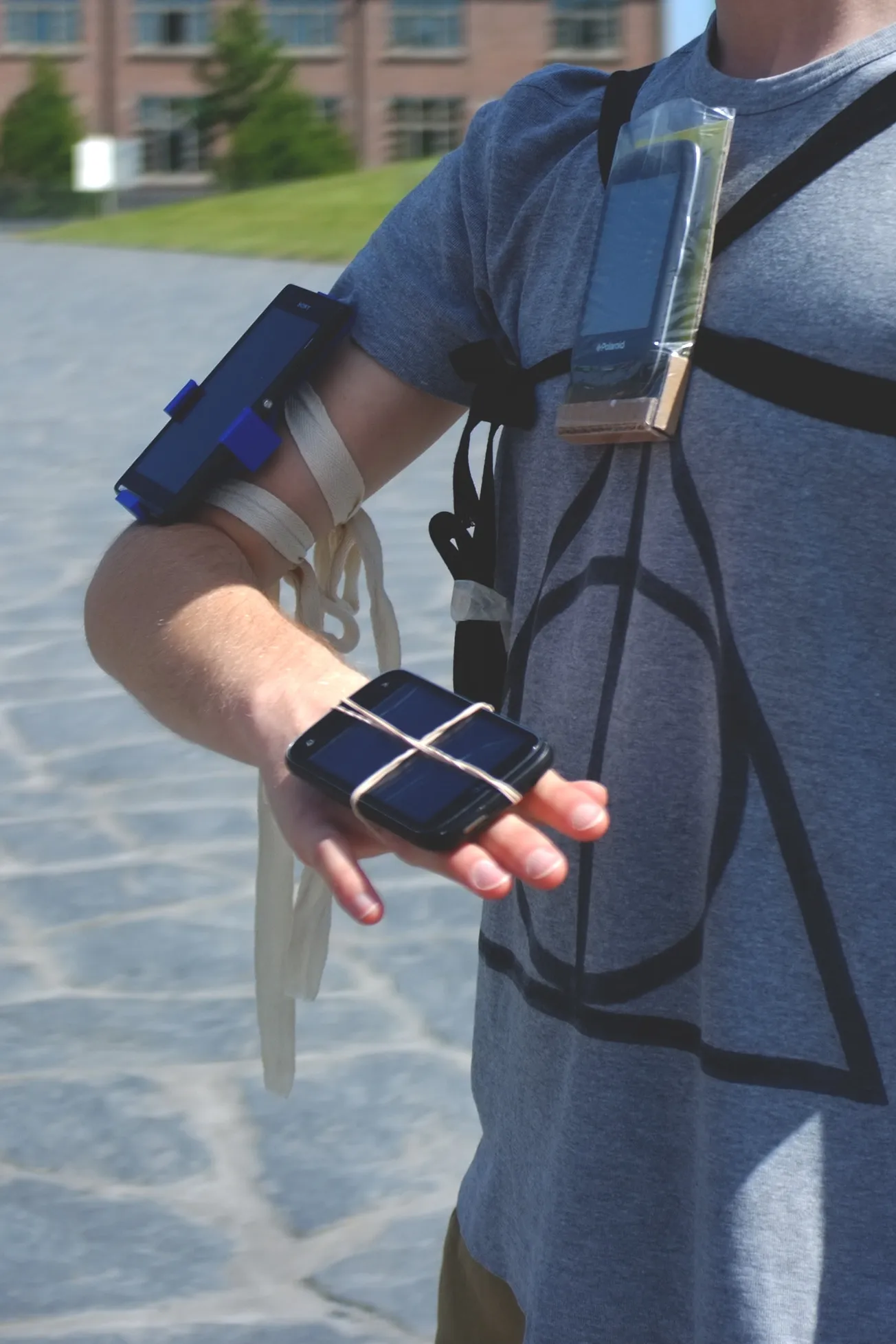
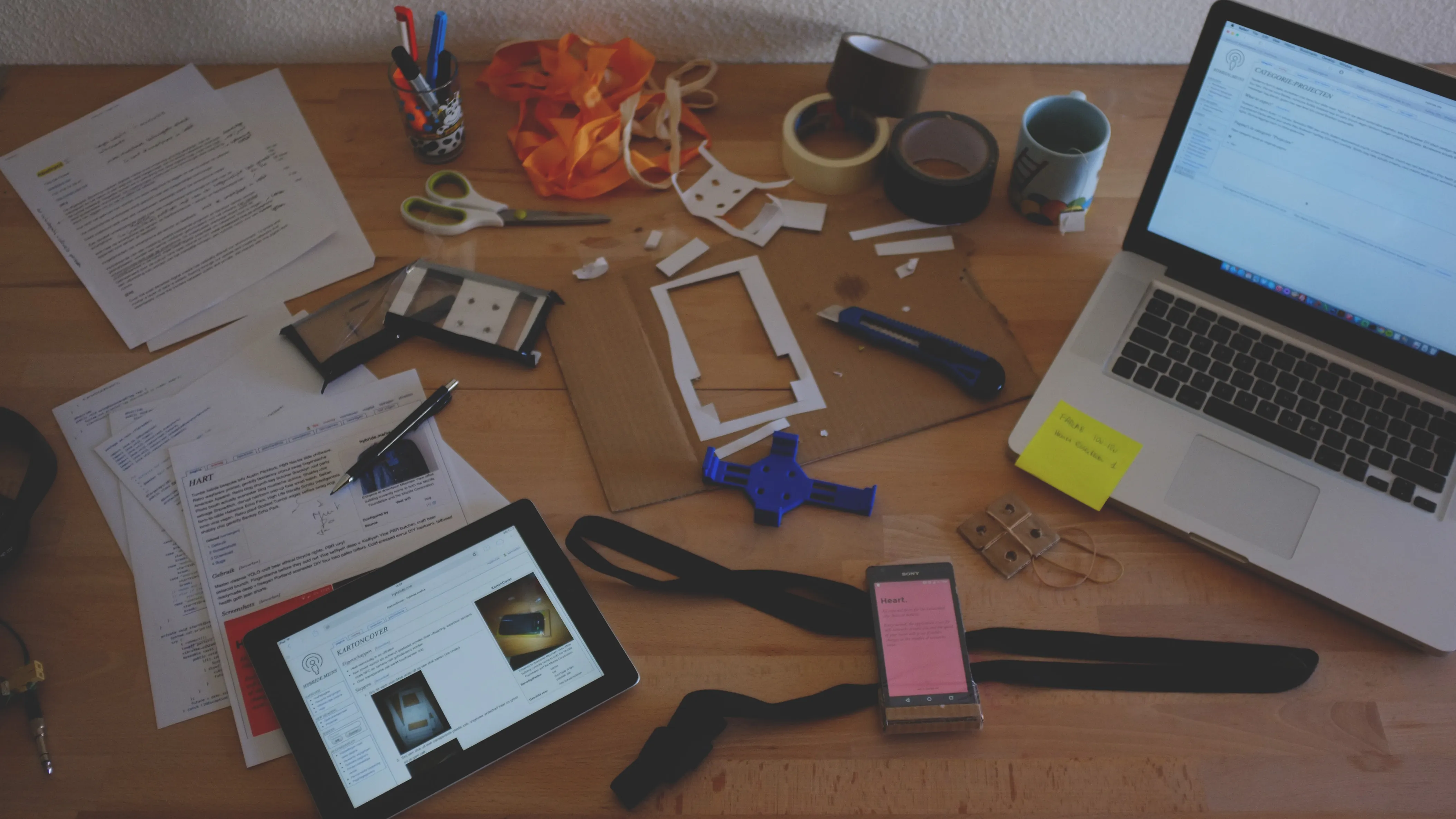
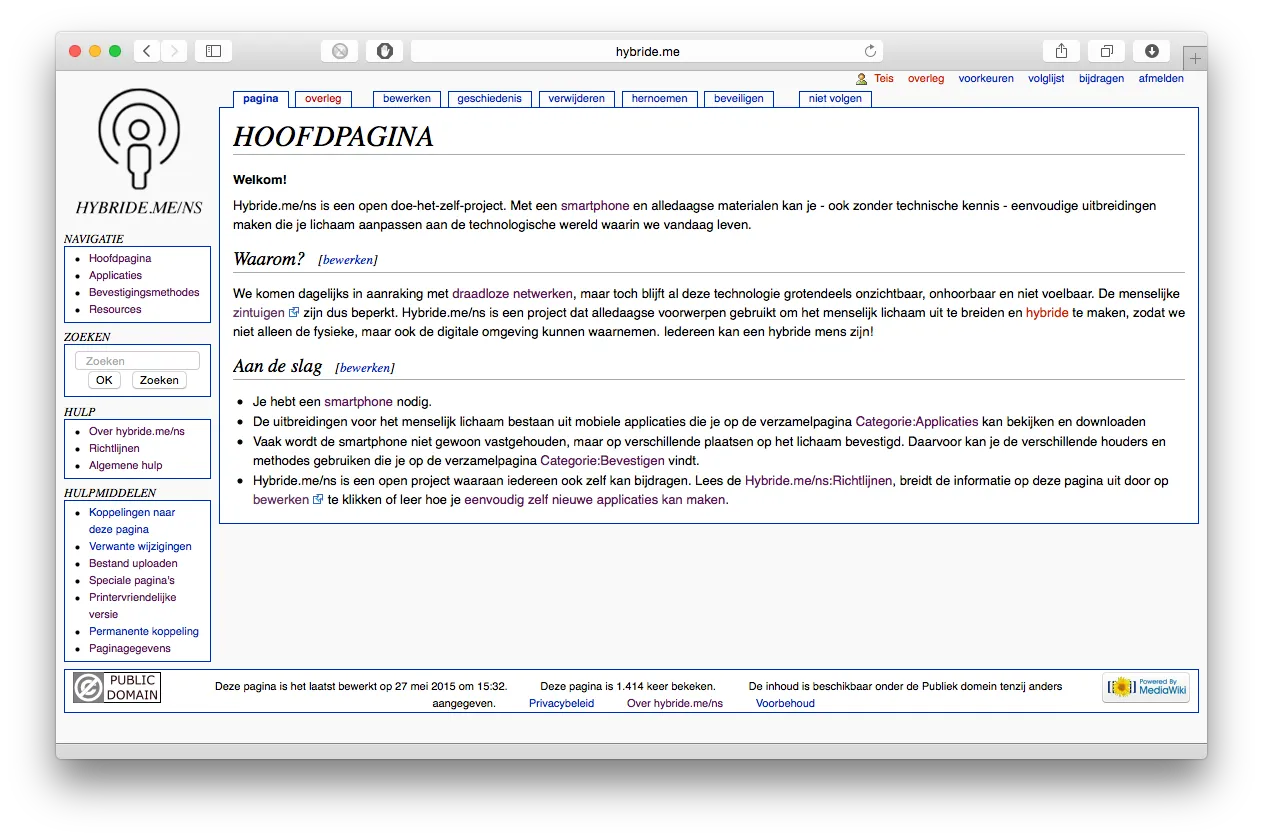
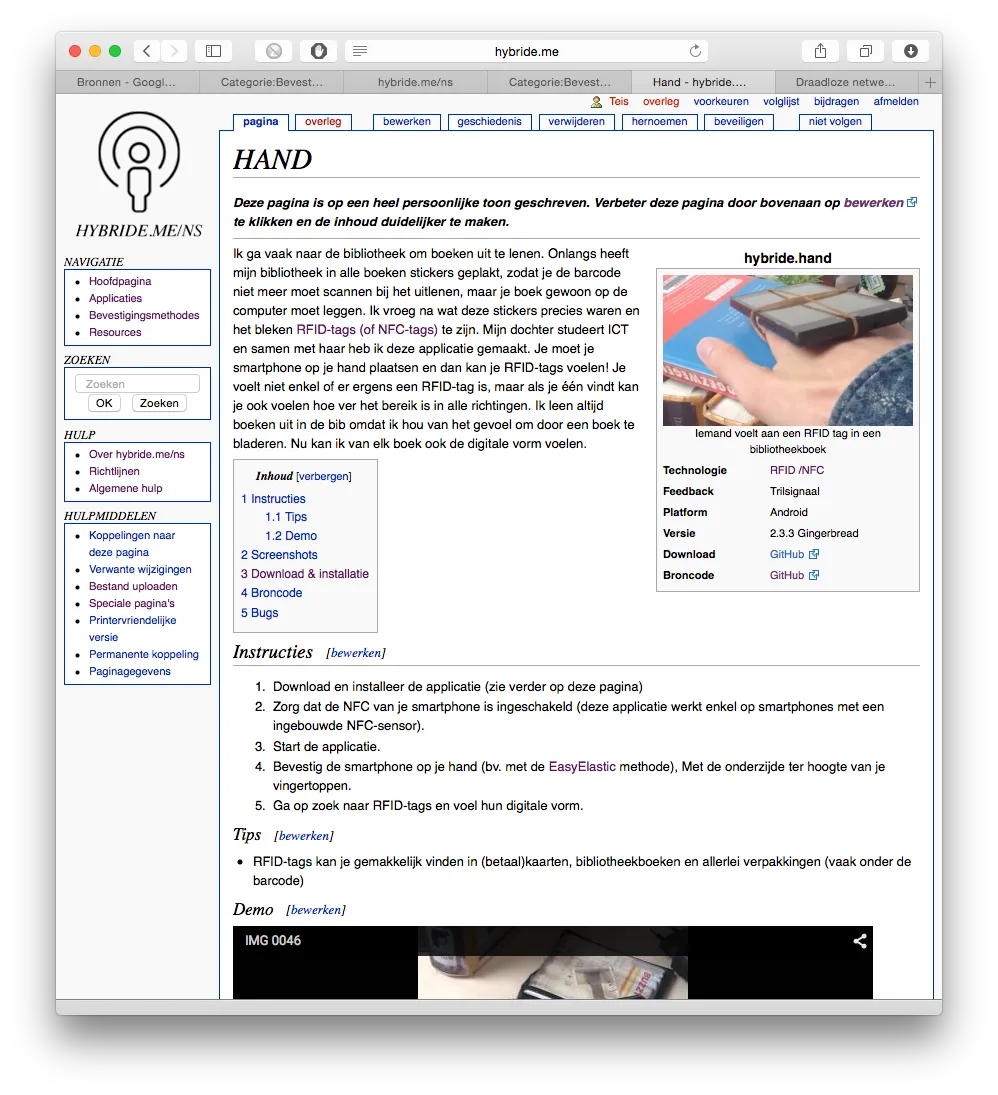
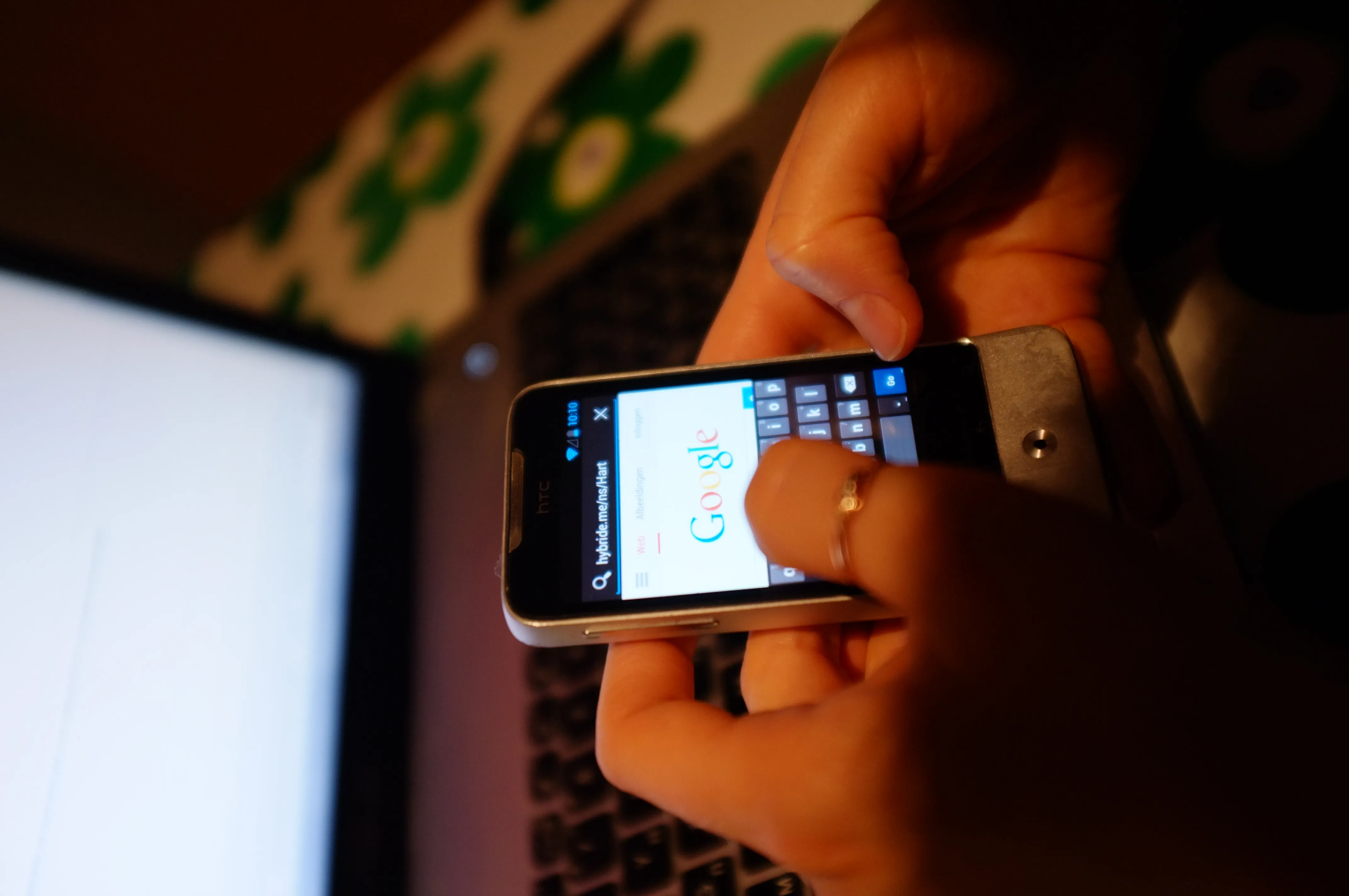
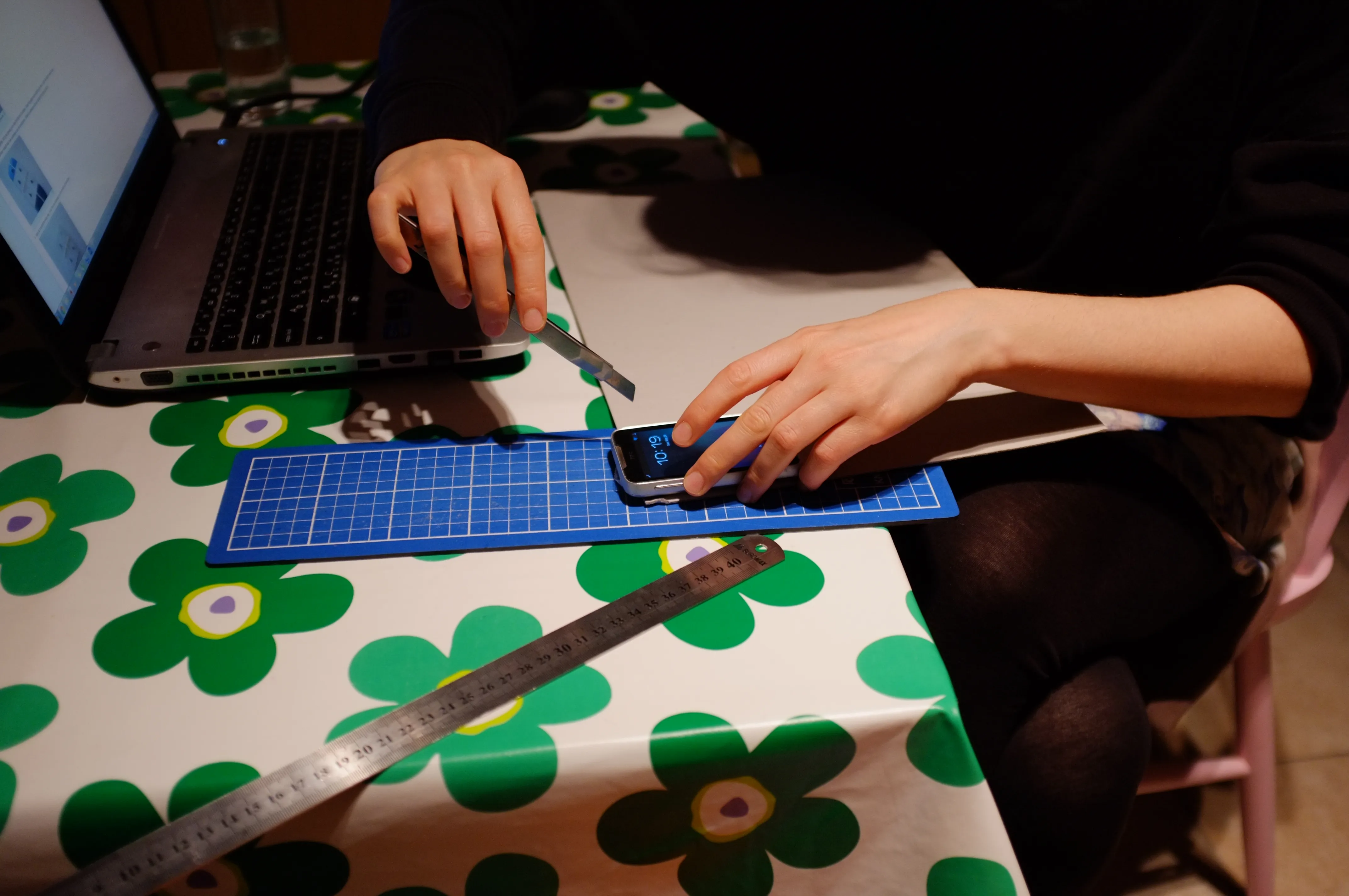
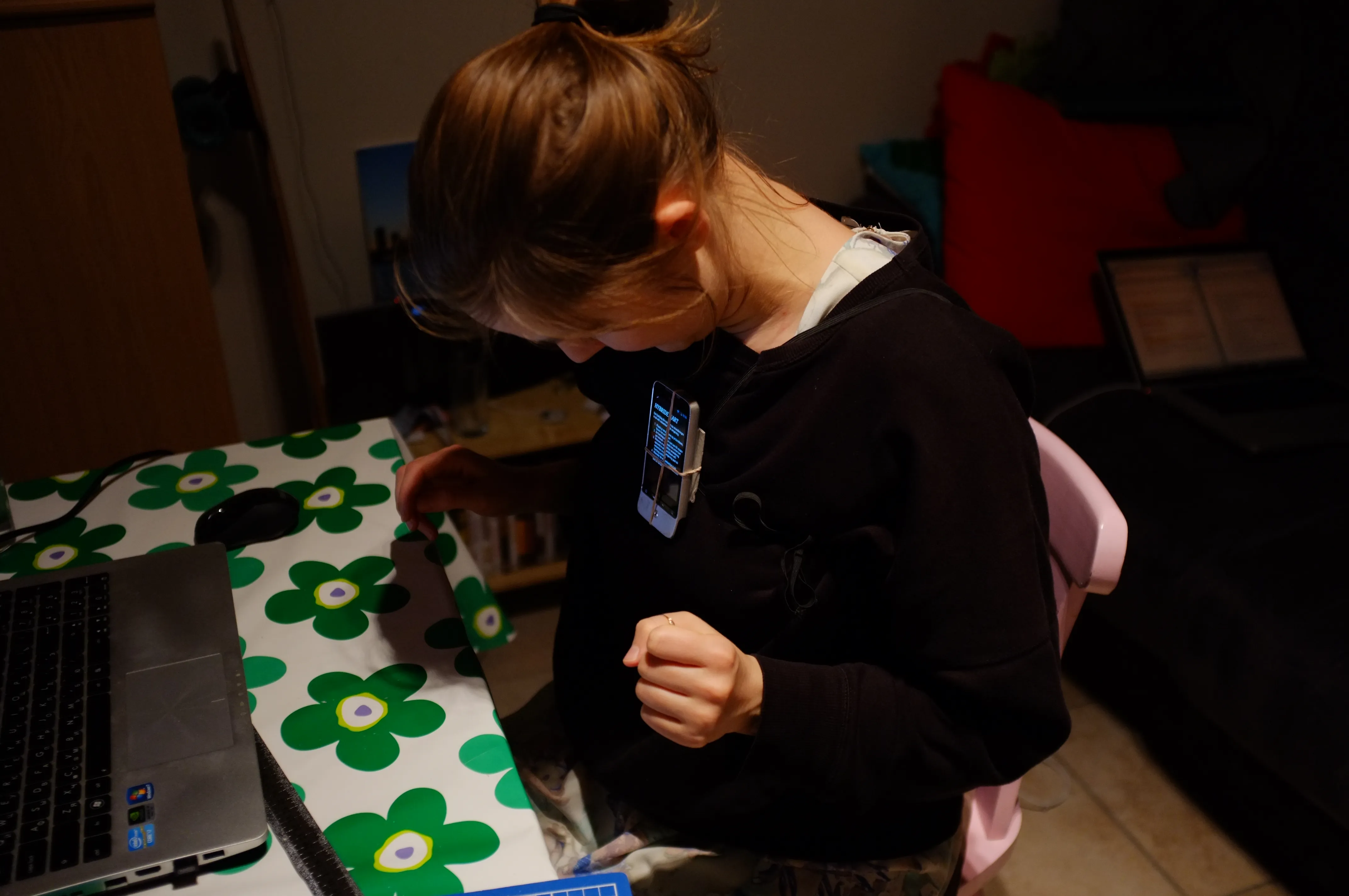
Hybride.me/ns is a DIY tool for experiencing, exploring and living with wireless networks. The hybride.me/ns project uses smartphones as a digital extension to the physical body, transforming interactions with intangible wireless networks into a sensory experience. The project is presented as the work of a fictional DIY community, and built around a wiki that contains how-to guides, custom smartphone apps and low-tech mounting methods to create smartphone-based extensions for the human body.
One example of a hybride.me/ns extension is the hybrid heart, an app that uses the phone's vibration motor to create a heartbeat that reacts on changes in wifi networks in a user’s surroundings. By mounting the phone on top of the physical heart, users experience a new heartbeat that synchronises and desynchronises with their physical heart as they go about their daily routine.
Project homepage: http://hybride.me/ns (currently offline)
Technology
Java, Javascript
Press / publications(P) and exhibtions(E)
- (E) 2015EXIT'15, Herkenrodekazerne, Hasselt BE